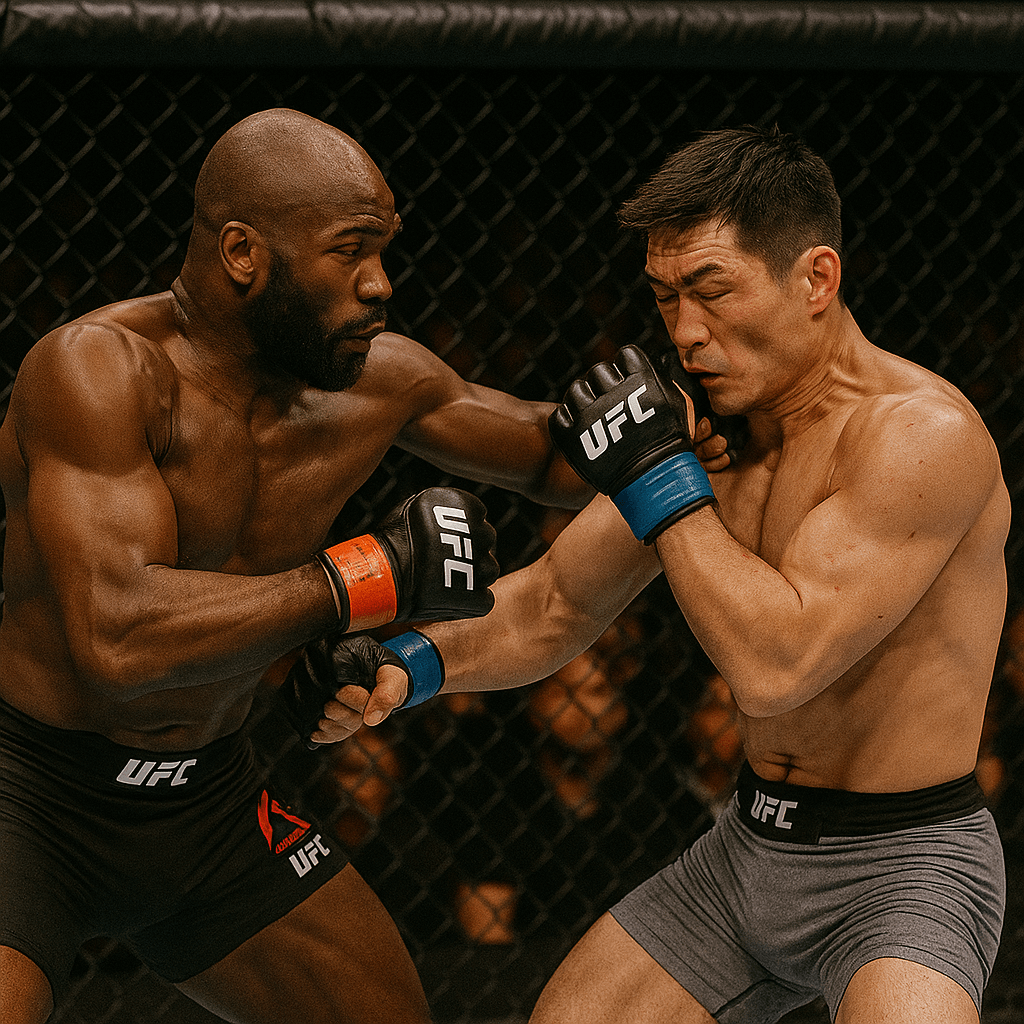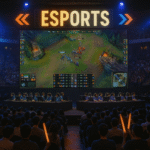Royce Gracie weighed 176 pounds when he walked into UFC 1 in 1993. His opponents? A 400-pound sumo wrestler, a 6’5″ kickboxer, and a street fighter who’d never lost a bout. Every betting expert, every martial arts magazine, every “expert” predicted Gracie would be obliterated within minutes. Instead, he submitted all three opponents without throwing a single punch. That night didn’t just crown a champion — it shattered every assumption about what makes a fighting style effective.
Combat sports exist in a constant state of evolutionary warfare. Every technique breeds a counter-technique. Every dominant style eventually meets its kryptonite. What worked yesterday becomes obsolete tomorrow, and fighters who refuse to adapt become cautionary tales. The most fascinating aspect? Sometimes the most devastating techniques look completely unimpressive to untrained eyes, while flashy moves that wow crowds often prove useless when lives and careers are on the line.
When technique beats raw power — the shocking upsets that changed combat sports
Raw athletic ability can only carry a fighter so far before superior technique exposes every weakness. Combat sports history is littered with genetic freaks who possessed incredible physical gifts but lacked the technical foundation to maximize their potential. Conversely, some of the most dominant champions looked ordinary in street clothes but possessed technical mastery that turned their bodies into precision weapons.
Consider James Toney’s boxing debut against Randy Couture in 2007. Toney, a multiple-weight boxing champion with devastating knockout power, faced Couture, a wrestler 13 years past his prime. On paper, Toney’s striking superiority should have ended the fight quickly. Reality? Couture took Toney down within 15 seconds and submitted him in the first round. The lesson was brutal: technical proficiency in one combat discipline means nothing without understanding how different styles interact.
The most shocking upsets often occur when fighters from traditional martial arts backgrounds face modern mixed martial artists. Lyoto Machida’s karate-based style seemed antiquated until he started knocking out elite UFC fighters with techniques that looked like they belonged in a 1970s kung fu movie. His crane kick knockout of Randy Couture at UFC 129 proved that traditional techniques, when properly adapted, could still devastate modern fighters.
The Anderson Silva phenomenon
Anderson Silva’s reign as UFC middleweight champion demonstrated how unorthodox techniques could dominate elite competition. His Matrix-like head movement, borrowed from capoeira and traditional martial arts, made world-class strikers look amateurish. Silva would literally lean away from punches with his hands down, a technique that should have resulted in him being knocked unconscious repeatedly. Instead, it became his signature weapon.
Technical precision versus athletic explosion
The contrast between technical fighters and athletic specimens creates some of combat sports’ most compelling narratives. Fedor Emelianenko looked like a middle-aged accountant but possessed technical mastery that allowed him to defeat opponents who were younger, stronger, and more athletic. His sambo background provided him with techniques that most Western fighters had never encountered, creating systematic advantages that transcended physical attributes.
The Royce Gracie paradigm shift
Gracie’s early UFC victories didn’t just win fights — they revolutionized how the world viewed martial arts effectiveness. His Brazilian jiu-jitsu techniques were so foreign to American martial artists that they had no framework for defending against them. Wrestlers tried to muscle out of submissions. Strikers attempted to punch their way free. None of it worked against properly applied leverage and technique.
Power punchers who couldn’t punch
Ironically, some of the most devastating knockout artists in combat sports weren’t naturally gifted punchers. They were technicians who understood leverage, timing, and precision. Chuck Liddell’s knockout power came not from raw strength but from his ability to time counter-punches perfectly. His sprawl-and-brawl style set up devastating counters that appeared effortless but required years of technical refinement.
The evolution arms race — how fighting styles adapt and counter each other
Combat sports exist in perpetual motion, with each dominant style eventually spawning the techniques that will defeat it. This evolutionary arms race creates fascinating cycles where forgotten techniques suddenly become cutting-edge weapons, and dominant strategies become obsolete almost overnight.
The most dramatic example occurred after Royce Gracie’s early UFC dominance. Within five years, basic takedown defense and submission awareness became mandatory for all fighters. The pure grappler advantage disappeared as strikers learned enough ground skills to survive, and wrestlers added submission games to their arsenals. Gracie’s revolutionary advantage lasted exactly long enough for the sport to adapt.
Wrestling dominated MMA’s next evolutionary phase. Fighters like Tito Ortiz and Chuck Liddell built careers on superior wrestling combined with knockout power. The formula seemed unbeatable: take opponents down at will or keep fights standing through superior wrestling defense. This dominance lasted until Anderson Silva and other technical strikers developed takedown defense sophisticated enough to keep fights standing while possessing striking skills that overwhelmed wrestlers.
The rise and fall of dominant archetypes
Each era of combat sports has been defined by a specific fighter archetype that seemed unbeatable until the next evolution emerged. The timeline reads like a martial arts textbook: grapplers dominated early MMA, wrestlers controlled the middle period, technical strikers ruled the late 2000s, and well-rounded athletes now dominate modern competition.
Technical adaptation cycles
Modern fighters must constantly evolve or risk obsolescence. Techniques that worked five years ago are now easily countered by any competent opponent. The leg kick, once a devastating weapon that many fighters couldn’t defend, is now neutralized by basic checking techniques taught in beginner classes. This constant adaptation creates opportunities for innovative fighters while punishing those who rely on outdated methods.
Cross-pollination between disciplines
The most successful modern fighters combine techniques from multiple martial arts in ways that create new hybrid styles. Jon Jones borrowed spinning techniques from taekwondo, combined them with Greco-Roman wrestling, and added submission skills from Brazilian jiu-jitsu. This combination created a style that was nearly impossible to gameplan against because it didn’t fit traditional categories.
Regional style preferences
Different regions develop distinct fighting cultures that emphasize specific techniques. Brazilian fighters typically excel at jiu-jitsu and creative striking. Russian fighters often possess superior wrestling and sambo techniques. Thai fighters bring devastating clinch work and leg kicks. These regional preferences create stylistic advantages that persist across generations of fighters.
Style matchups that create fireworks and disasters
Certain fighting style combinations create predictable patterns that experienced observers can spot immediately. These matchups often determine fight outcomes before the first punch is thrown, creating opportunities for astute analysts and bettors while providing spectacular entertainment for fans.
The classic striker versus grappler matchup remains combat sports’ most fundamental strategic battle. Strikers seek to keep fights standing where their technique advantages are maximized. Grapplers attempt to take fights to the ground where their submission skills become dominant. The tension between these opposing gameplans creates some of combat sports’ most compelling drama.
- Pressure fighters versus counter-strikers: Aggressive fighters who move forward constantly face opponents who excel at timing counter-attacks. This creates explosive exchanges where momentum can shift instantly. Examples include Chuck Liddell’s counter-punching against pressure fighters, and Anderson Silva’s ability to punish aggressive opponents with precise counters.
- Wrestling-heavy fighters versus submission specialists: Wrestlers often dominate position but lack finishing ability, while submission experts excel at capitalizing on small opportunities. These matchups frequently result in grinding battles where small technical advantages accumulate over time.
- Southpaw versus orthodox stance battles: The angles created by opposite-stance matchups favor certain techniques while negating others. Left-handed fighters often possess advantages that orthodox opponents struggle to neutralize, creating systematic edges that persist throughout fights.
- Range specialists versus versatile fighters: Fighters who excel at specific ranges (long-range strikers, clinch specialists, ground fighters) face opponents comfortable at all ranges. These matchups often become battles of range control where positioning becomes more important than individual techniques.
- Power punchers versus technical boxers: Raw knockout power versus superior boxing technique creates compelling contrasts. Technical boxers attempt to neutralize power through superior movement and timing, while power punchers seek single-shot opportunities to end fights instantly.
Style matchups also create disaster scenarios where dominant fighters face opponents specifically equipped to exploit their weaknesses. Chuck Liddell’s knockout power became irrelevant against Tito Ortiz’s superior wrestling. Anderson Silva’s striking mastery was neutralized by Chael Sonnen’s relentless wrestling pressure. These stylistic nightmares demonstrate how even elite fighters can be systematically dismantled by opponents with the right technical toolkit.
The most interesting matchups occur when fighters possess complementary strengths that create competitive balance. Neither fighter has clear advantages, forcing both to adapt and evolve during the fight itself. These contests often produce the most memorable battles in combat sports history.
Scientific breakdown — what makes certain techniques devastatingly effective
Modern combat sports analysis has moved beyond traditional martial arts philosophy to embrace biomechanics, physics, and sports science. This scientific approach has revealed why certain techniques work while others, despite looking impressive, prove ineffective under pressure.
Leverage and mechanical advantage determine a technique’s effectiveness more than raw strength or speed. Brazilian jiu-jitsu’s dominance stems from its systematic exploitation of leverage principles. A properly applied armbar uses the entire body’s strength against a single joint, creating mechanical advantages that make resistance futile regardless of strength differences.
The most devastating striking techniques combine multiple force vectors simultaneously. A perfectly timed cross combines hip rotation, shoulder extension, and weight transfer to generate exponentially more power than arm strength alone. This explains why technical strikers often generate more knockout power than naturally strong fighters who rely on arm punches.
Biomechanical efficiency in combat techniques
High-level fighters move with mechanical efficiency that maximizes force while minimizing energy expenditure. Every movement serves multiple purposes: defense, positioning, and attack setup. This efficiency allows elite fighters to maintain pace while opponents exhaust themselves through wasted motion.
Neurological factors in technique application
Combat effectiveness depends heavily on neurological efficiency — the ability to execute techniques automatically under stress. Fighters who must consciously think about technique application will always lose to opponents whose skills have become neurologically hardwired through proper training.
The physics of knockout power
Knockout power results from force transfer efficiency rather than raw strength. The most devastating punchers generate power through perfect kinetic chain activation — starting with foot placement, transferring through legs and hips, and culminating in precise hand placement. This explains why small fighters can generate knockout power while larger, stronger fighters sometimes struggle to hurt opponents.
Timing and distance management
The most effective fighters possess superior timing and distance management skills that allow them to maximize their techniques’ effectiveness while minimizing opponents’ opportunities. This spatial awareness often determines fight outcomes more than individual technique mastery.
Energy system optimization
Elite fighters understand how different fighting styles tax various energy systems. Grapplers excel at sustained output over extended periods, while explosive strikers maximize short-burst power. Matching fighting style to optimal energy system utilization creates significant advantages over opponents who fight against their physiological strengths.
Psychological factors in technique effectiveness
Mental state dramatically affects technique application. Confident fighters execute techniques with greater force and precision than tentative opponents. This psychological component explains why some fighters’ techniques become more effective as fights progress while others deteriorate under pressure.
The betting edge — reading styles for profitable predictions
Understanding fighting styles provides massive advantages for sports bettors willing to analyze matchups beyond surface-level statistics. Style matchups often create predictable patterns that betting markets consistently misprice, creating profitable opportunities for informed bettors.
Professional fight analysts develop systematic approaches to style analysis that consider multiple factors simultaneously. Physical attributes, technical skills, psychological tendencies, and historical performance patterns all contribute to comprehensive style profiles that predict fight outcomes with surprising accuracy.
The most profitable betting opportunities often occur when public perception diverges from stylistic reality. Casual fans frequently overvalue flashy techniques while underestimating fundamental skills. This creates market inefficiencies where technically superior fighters remain undervalued despite possessing clear advantages.
- Grappling-heavy fighters are often undervalued in striking-focused markets: Betting markets sometimes underestimate wrestlers and submission specialists because their skills appear less exciting than knockout power. However, grappling skills often provide higher win probabilities than spectacular but inconsistent striking ability.
- Stylistic nightmare matchups create massive value opportunities: When elite fighters face opponents with styles specifically designed to exploit their weaknesses, betting markets often fail to adjust appropriately. These matchups can provide enormous value for bettors who recognize the stylistic disadvantages.
- Regional style preferences create systematic market biases: Betting markets often favor fighters from regions with popular fighting styles while undervaluing those from areas with less mainstream appeal. Understanding these biases can reveal consistent value opportunities.
Successful style-based betting requires understanding how different attributes interact under pressure. A fighter’s technical skills on paper might not translate to actual fight performance due to psychological factors, conditioning issues, or adaptation problems. The most profitable approach combines technical analysis with psychological assessment and historical performance evaluation.
Next-generation combat — where fighting evolution is heading
Combat sports stand at the threshold of another evolutionary leap as technology, science, and global talent pools converge to create new possibilities. The next generation of fighters will possess technical skills and physical attributes that would have seemed impossible just decades ago.
Virtual reality training systems allow fighters to practice against simulated opponents with perfect technique repetition. This technology will eventually democratize access to high-level training that was previously available only to elite fighters with expensive coaching teams. The result will be a general elevation in technical standards across all levels of competition.
Genetic testing and personalized training programs based on individual physiological profiles will optimize fighter development in ways that maximize natural advantages while addressing genetic limitations. Future fighters may be developed specifically for certain fighting styles based on their genetic predispositions.
The globalization of combat sports continues to introduce new techniques and training methods from previously isolated martial arts traditions. Social media and online education platforms spread technical knowledge instantaneously, accelerating the rate of stylistic evolution and creating more well-rounded fighters.
Artificial intelligence analysis of fight footage will eventually provide real-time tactical adjustments and identify technical patterns invisible to human observation. This technology could revolutionize both training and in-fight strategy, creating new advantages for fighters and teams that embrace technological innovation.
The future of combat sports will likely feature fighters who are more technically proficient, physically optimized, and tactically sophisticated than ever before. But will this technological evolution preserve the raw human drama that makes combat sports compelling, or will it transform fighting into something entirely different?
Title: Combat sports styles ⚔️ Effectiveness analysis & betting insights
Description: Expert breakdown of fighting styles effectiveness in MMA, boxing, and combat sports. Technical analysis 🥊 with betting strategies for style matchups.



